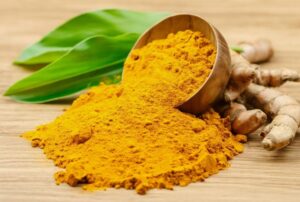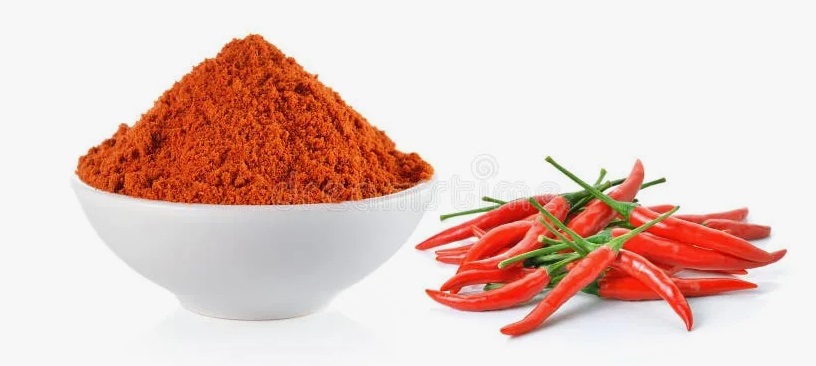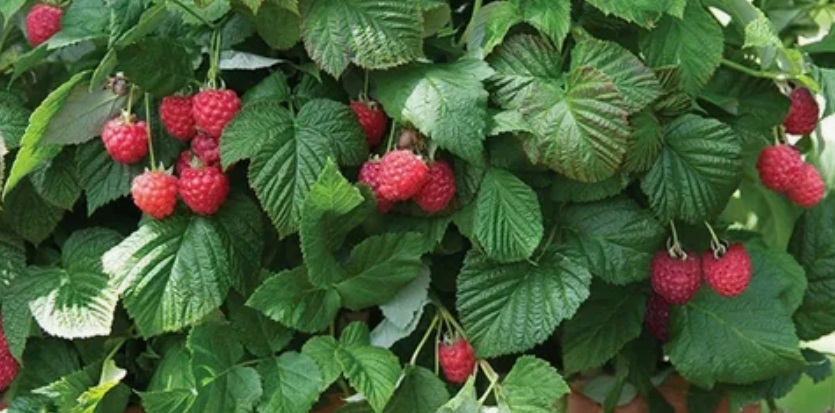Turmeric: The Golden Spice of Life
Turmeric, often referred to as the “golden spice,” is a powerful plant that has been treasured for centuries for its vibrant color, distinct flavor, and remarkable health benefits. From ancient Ayurvedic medicine to modern-day wellness trends, turmeric continues to play a significant role in both traditional and contemporary health practices. But what exactly is turmeric, where does it come from, and how can you make the most of its amazing properties?
What is Turmeric and Where Does it Grow?
Turmeric is a flowering plant, scientifically known as Curcuma longa, which belongs to the ginger family (Zingiberaceae). Native to Southeast Asia, turmeric thrives in warm, tropical climates. It is widely cultivated in countries like India, Indonesia, China, and Sri Lanka, with India being the largest producer and exporter.
The part of turmeric that we use is the rhizome, or underground stem, which is harvested, boiled, dried, and ground into a fine, yellow-orange powder. This powder is the turmeric commonly seen in kitchens and on store shelves. Its active ingredient, curcumin, is responsible for both its bright color and numerous therapeutic properties. Turmeric: The Golden
What Are Turmeric’s Benefits?
Turmeric has been lauded for a wide range of benefits, from improving health to enhancing beauty. Below are some of its key advantages:
-
Anti-Inflammatory Properties: Curcumin, the primary active compound in turmeric, is a potent anti-inflammatory agent. It may help reduce chronic inflammation, which is linked to diseases such as arthritis, diabetes, and heart disease.
-
Rich in Antioxidants: Turmeric is packed with antioxidants, which protect the body from oxidative stress and free radicals. This helps prevent cell damage and slows down aging.
-
Boosts Immunity: Turmeric contains bioactive compounds that strengthen the immune system, helping the body fight off infections and illnesses.
-
Supports Digestive Health: Turmeric aids in digestion by stimulating bile production and reducing bloating or gas. It is often used to treat indigestion and stomach discomfort.
-
Improves Brain Function: Research suggests that turmeric may increase levels of brain-derived neurotrophic factor (BDNF), a protein linked to improved memory and brain function. It might also reduce the risk of neurodegenerative diseases, such as Alzheimer’s.
-
Heart Health: Turmeric helps regulate cholesterol levels and improve the health of blood vessels, reducing the risk of heart disease.
-
Promotes Healthy Skin: Its antibacterial and anti-inflammatory properties make turmeric a popular ingredient in skincare. It helps treat acne, eczema, and other skin conditions, leaving the skin glowing and clear.
-
Potential Cancer Prevention: Studies have shown that curcumin may suppress the growth of certain cancer cells and could potentially inhibit the spread of tumors.
Where and How Can We Use Turmeric?
Turmeric is incredibly versatile and can be used in various ways. Here are just a few examples:
-
Culinary Use: Turmeric is a staple in Indian and Southeast Asian cuisines. It is used in curries, soups, rice dishes, and marinades. Its warm, earthy flavor adds depth to many recipes.
-
Golden Milk: A blend of turmeric, milk (or a plant-based alternative), and spices like cinnamon and ginger creates a comforting and health-boosting beverage, often called “golden milk” or turmeric latte.
-
Smoothies and Juices: Add a pinch of turmeric to smoothies or fresh juices for an antioxidant boost.
-
Skincare: Turmeric can be used in homemade face masks to brighten skin, reduce inflammation, and combat blemishes.
-
Dietary Supplements: Turmeric is available in capsule form for those who want to take it as a daily supplement to boost overall wellness.
-
Tea: Turmeric tea, often combined with ginger or lemon, is a soothing drink that supports digestion and strengthens the immune system.
-
Topical Application: Mixed with coconut oil or honey, turmeric can be applied directly to cuts, wounds, or inflamed areas to promote healing.
What Are Turmeric’s Health Cures?
Turmeric is not just a preventive powerhouse—it has been found to alleviate or treat a variety of conditions:
-
Arthritis and Joint Pain: Turmeric’s anti-inflammatory and analgesic properties help reduce joint pain, swelling, and stiffness in conditions like rheumatoid arthritis and osteoarthritis.
-
Digestive Disorders: Turmeric is useful in managing gastrointestinal conditions like irritable bowel syndrome (IBS) and ulcers.
-
Diabetes Management: Curcumin regulates blood sugar levels and improves insulin sensitivity, making it beneficial for people with diabetes.
-
Wound Healing: Turmeric’s antibacterial and antiseptic properties speed up the healing process for minor cuts, burns, and wounds.
-
Cold and Respiratory Issues: Turmeric helps clear congestion, soothe sore throats, and treat respiratory infections.
-
Depression and Anxiety: Studies suggest that curcumin has antidepressant-like and mood-enhancing effects due to its ability to boost serotonin and dopamine levels.
-
Detoxification: Turmeric supports liver function and aids in detoxifying the body by eliminating toxins.
-
Weight Management: Turmeric can help with weight loss by improving metabolism and reducing inflammation, which is often linked to obesity.

Beyond Curry: Unleashing the Golden Power of Turmeric in Your Kitchen
Turmeric, with its vibrant golden hue and earthy flavor, is more than just a spice rack staple. It’s a powerhouse of health benefits and a versatile ingredient that can elevate a multitude of dishes. While its presence is practically synonymous with Indian cuisine, turmeric deserves a wider platform in our daily cooking. Let’s explore some practical ways to incorporate this golden spice into your meals and enjoy its remarkable properties.
Practical Dishes Where Turmeric Shines:
Forget confining turmeric to curries! Its subtle flavor profile allows it to blend seamlessly in a variety of dishes, adding both color and a nutritional boost. See a few ideas to get you started:
Golden Milk (Turmeric Latte): The ultimate comfort drink, simply combine warm milk (dairy or plant-based) with turmeric, a pinch of black pepper (which enhances turmeric absorption), ginger, cinnamon, and a touch of sweetener like honey or maple syrup.
Scrambled Eggs/Omelets: A dash of turmeric adds a beautiful golden color and subtle warmth to your morning eggs.
Roasted Vegetables: Toss your favorite vegetables (like cauliflower, broccoli, sweet potatoes, or carrots) with olive oil, turmeric, garlic powder, and roast until tender. The turmeric enhances their natural sweetness.
Soups and Stews: From chicken noodle soup to lentil stew, a teaspoon of turmeric adds depth and complexity to your favorite comfort food.
Rice and Grains: Stir a pinch of turmeric into your rice or quinoa while cooking for a vibrant color and subtle flavor.
Smoothies: Add a quarter to half a teaspoon of turmeric powder to your favorite smoothie for an extra boost of antioxidants and anti-inflammatory properties.
Salad Dressings: Whisk turmeric into your homemade salad dressings along with olive oil, lemon juice, and other spices for a flavorful and healthy twist.
Why Choose Turmeric for These Dishes?
Turmeric isn’t just about flavor; it’s about enhancing your meals with valuable nutrients. Adding it to the above dishes allows you to:
Boost the Nutritional Value: Turmeric is a rich source of curcumin, a powerful antioxidant and anti-inflammatory compound.
Add Visual Appeal: Its vibrant color makes dishes more appetizing and visually appealing.
Subtle Flavor Enhancement: Turmeric adds a warm, earthy note that complements many ingredients.
Improve Absorption of Nutrients: Certain dishes, like those with healthy fats (olive oil, avocado), can help improve the absorption of curcumin.
Health Benefits: Beyond Just Flavor
The benefits of turmeric go far beyond its culinary function. Its active compound, curcumin, has been extensively researched for its potential health-promoting properties.
Powerful Anti-inflammatory: Curcumin’s potent anti-inflammatory properties may help reduce inflammation throughout the body, potentially alleviating symptoms of conditions like arthritis and inflammatory bowel disease.
Antioxidant Powerhouse: Curcumin neutralizes free radicals, protecting cells from damage and contributing to overall health.
Brain Health: Studies suggest curcumin may improve brain function and protect against age-related cognitive decline.
Heart Health: Curcumin may improve heart health by reducing inflammation and improving blood vessel function.
Turmeric as a Cold and Flu Remedy:
Turmeric has long been used in traditional medicine to support the immune system and alleviate cold and flu symptoms. Here’s how it can help:
Anti-inflammatory properties: Helps soothe a sore throat and reduce inflammation in the respiratory tract.
Antioxidant Support: Strengthens the immune system and helps fight off infection.
Mucus Relief: Its warming properties can help break up congestion.
Practical Cold and Flu Cures with Turmeric:
Turmeric Tea: Steep a teaspoon of turmeric powder with ginger, honey, and lemon in hot water for a soothing and immune-boosting tea.
Golden Milk: The ultimate comfort drink can also help fight off a cold. Add an amount of black pepper for absorption.
Turmeric Gargle: Mix a pinch of turmeric with warm salt water and gargle to soothe a sore throat.
Add to Soups and Broths: Incorporate turmeric into your favorite chicken noodle soup or vegetable broth for added immune support.
Important Considerations:
Black Pepper is Key: Curcumin is poorly absorbed by the body on its own. Always pair turmeric with black pepper, which contains piperine, a compound that significantly enhances curcumin absorption.
Consult Your Doctor: If you have any underlying health conditions or are taking medications, consult with your doctor before incorporating large amounts of turmeric into your diet.
In Conclusion:
Turmeric is a culinary and health treasure waiting to be unlocked. By incorporating it creatively into your daily dishes, you can reap its many benefits and add a touch of golden goodness to your life. So, ditch the spice rack confinement and let turmeric shine in your kitchen!
Conclusion
Turmeric is a true gift from nature—a spice that not only enhances the flavor of food but also promotes health and well-being in countless ways. Its broad array of benefits, from reducing inflammation to boosting brain function, makes it a must-have in every home. Whether consumed as a culinary ingredient, in teas, or as a supplement, turmeric is a powerful ally for anyone looking to maintain a healthy lifestyle.
To make the most of turmeric, combine it with black pepper, as this enhances the absorption of curcumin in the body. Remember, while turmeric is generally safe, it’s best to consult a healthcare professional if you’re considering high doses or using it to manage specific health conditions. Embrace this golden spice, and add timeless wisdom to your modern life!
You can read below writings
Lemon: The Tangy Wonder – Benefits, Uses, and More
What is Red Cabbage and Where Does It Grow?
what is green tea and where does it grow






